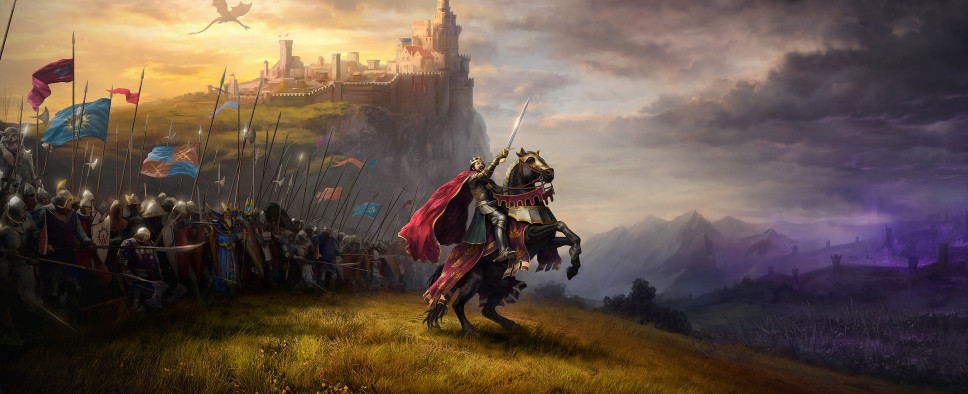King's Bounty II Review
-
Category: ReviewsHits: 13113

Article Index
You can also control up to five stacks of units in your character's army. Units belong to one of the four ideals, and they have a leadership cost, which controls how many of them you can have in a stack. Paladins have the highest leadership rating and thus the most units, while mages have the lowest leadership rating and the least units. Strangely, there is also a cap for each unit, and once you reach that cap, you're not allowed to have more of that unit in a stack, even if they'd fit under your leadership rating. This makes low level troops even worse than you'd expect.
Each ideal has roughly a dozen units, giving King's Bounty II only about half as many units as King's Bounty: The Legend. Worse, many of the King's Bounty II units are simple upgrades of each other, so it feels like there are even fewer units than there are. For example, the order ideal features mostly standard human troops, and they include level 1 healers and level 3 disciples, which are about the same except for disciples being more powerful.
You're also somewhat restricted to using units from one or two ideals. The more you mix units from different ideals, the more of a morale penalty the units take (especially if you mix units from opposing ideals), and the lower a unit's morale is, the more likely it is to skip its turn during battles. Conversely, the higher a unit's morale is, the more likely it is to gain an extra turn during battles, and if you only use units from a single ideal, then you start out with +1 morale.
As you use units in battles, they gain experience and can rise in rank from 1 to 3. As units increase their rank, they become more powerful, sometimes gaining extra skills. For example, the order ideal's disciple units gain a Ray of Light spell as they advance, which adds a damaging spell to their repertoire. You can also keep units in reserve. This reserve space is unlimited (and available right away), and it means you can stockpile extra copies of the units you like, and not have to run back to recruiters (who sell units) as often.
Finally, characters can wear equipment. There are ten item slots available, including slots for body armor, boots, and gloves -- plus some sort of "horse" slot that isn't used for anything. Items give bonuses to your character (for spellcasting) and to your army (for battles), and they come in a variety of qualities, including unique items and set items. Unlike King's Bounty: The Legend, all of the major items in King's Bounty II appear at fixed locations (some as quest rewards, some from shops), so you're guaranteed to get complete sets if you want them. A few of the sets are really useful (like a necromancy set that gives all sorts of bonuses to undead units), but most don't provide enough of a benefit to bother with, and a few are just plain strange (like two sets that do nothing more than improve your shopping prices). There's just barely enough variety to the equipment for it to be interesting in the game.
Gameplay: Questing
Apparently, 1C wanted King's Bounty II to feel more like an RPG than a strategy game, and so they made a couple of important changes to shift the focus. The most obvious is that they switched from using an isometric view to a third-person over-the-shoulder view. This, of course, makes the game more "modern" and "immersive" -- at least that's what their marketing department probably told them -- but in reality it just makes King's Bounty II look like a lightweight Skyrim (or Witcher or take your pick of third-person RPG).
The graphics engine just feels cheap, and issues abound, including lots of obvious seams in the terrain, and maybe ten basic faces that are used for all of the characters you meet, so that everybody looks like distant cousins of each other. When I played King's Bounty: The Legend and its follow-ups, I never thought, "Wow, that looks bad," but I thought that a lot during King's Bounty II. The switch in perspective doesn't help the game at all.

